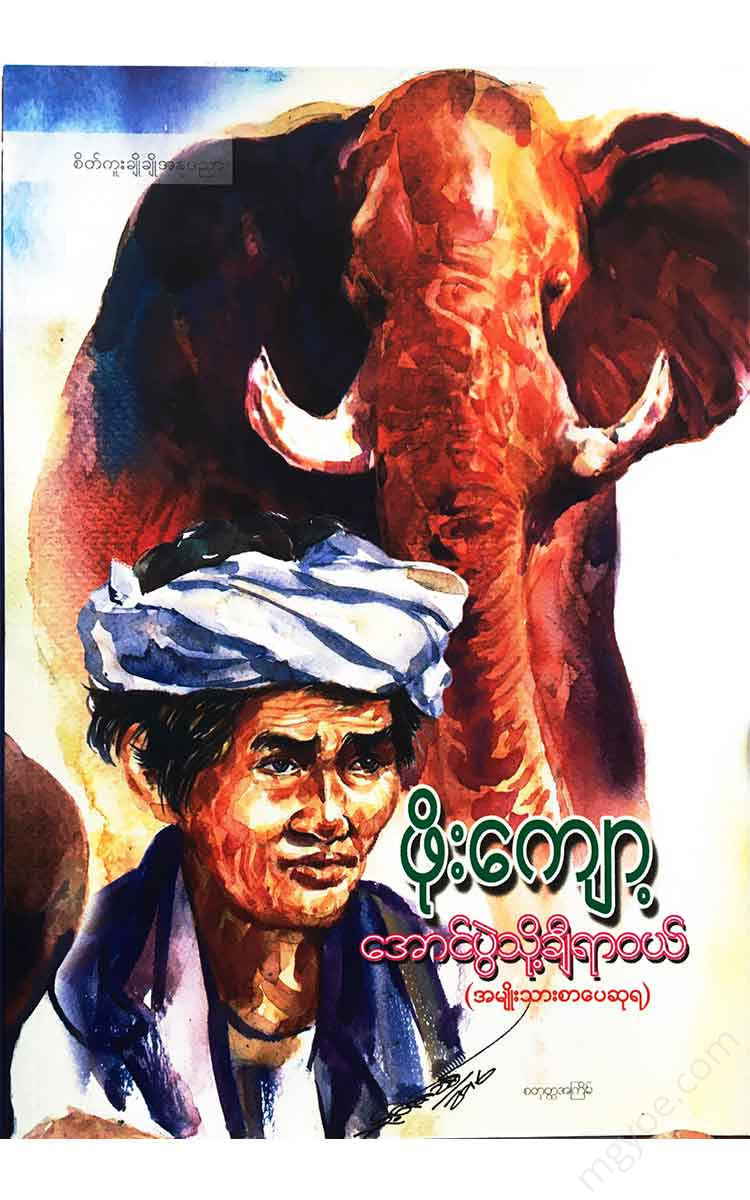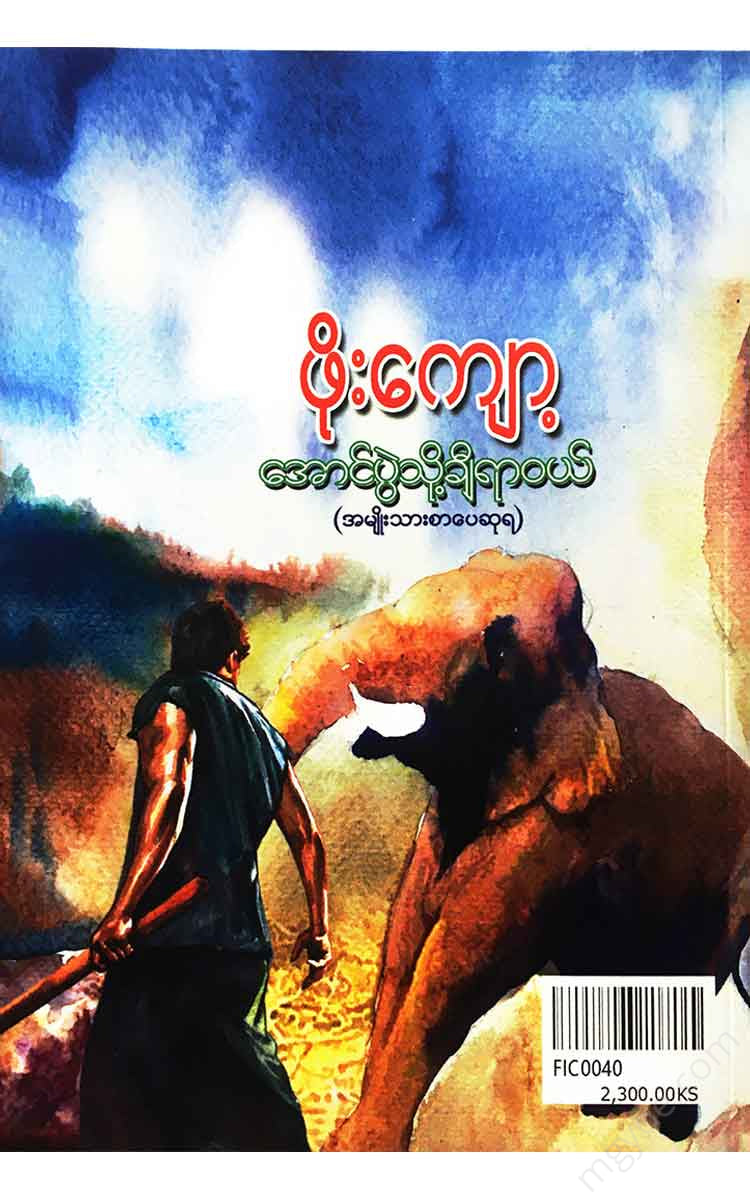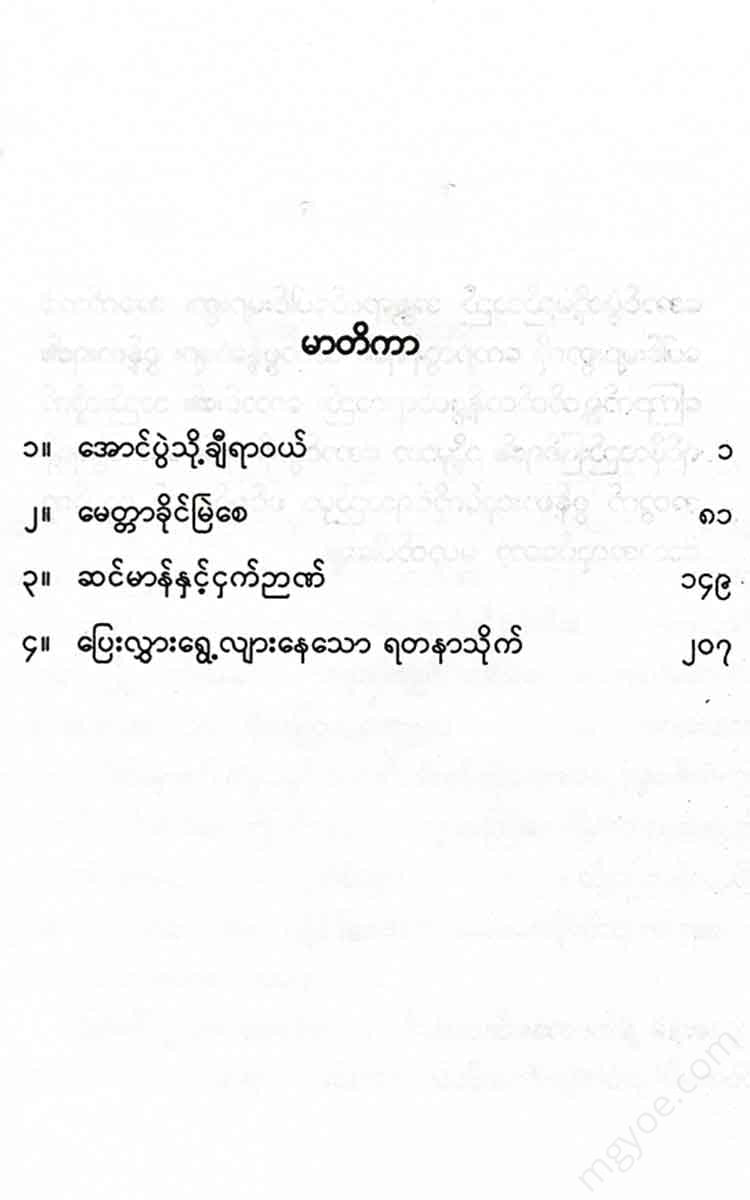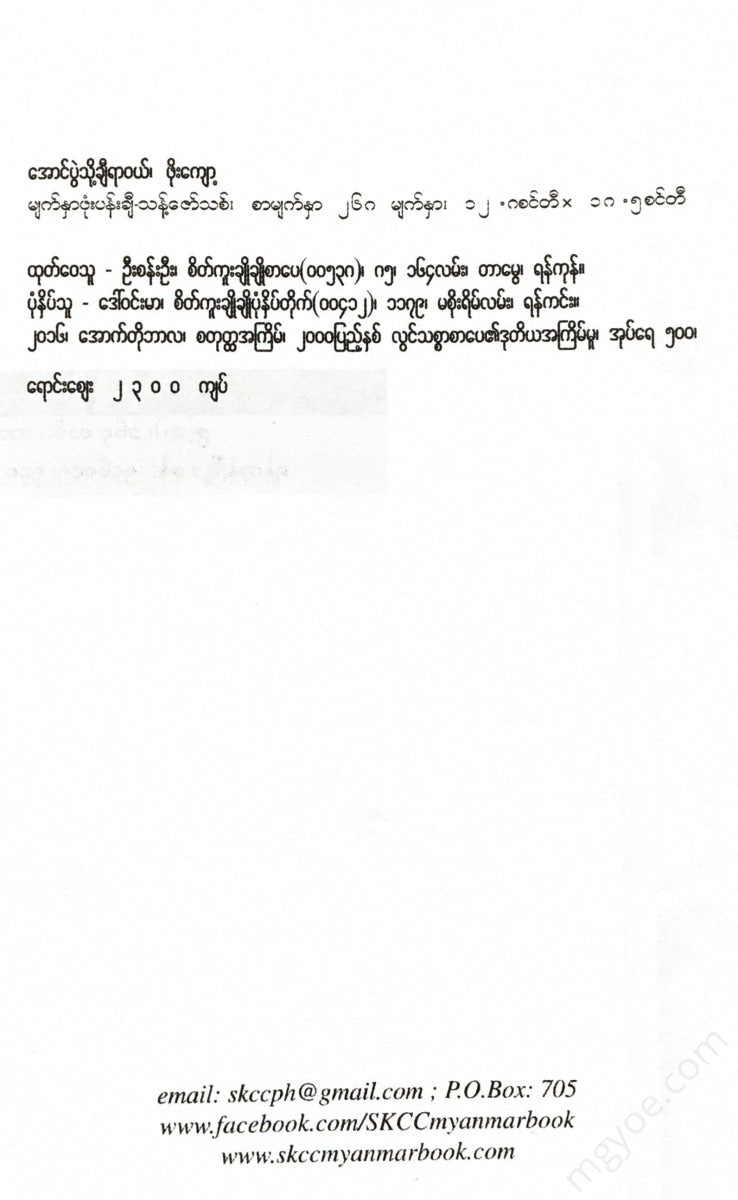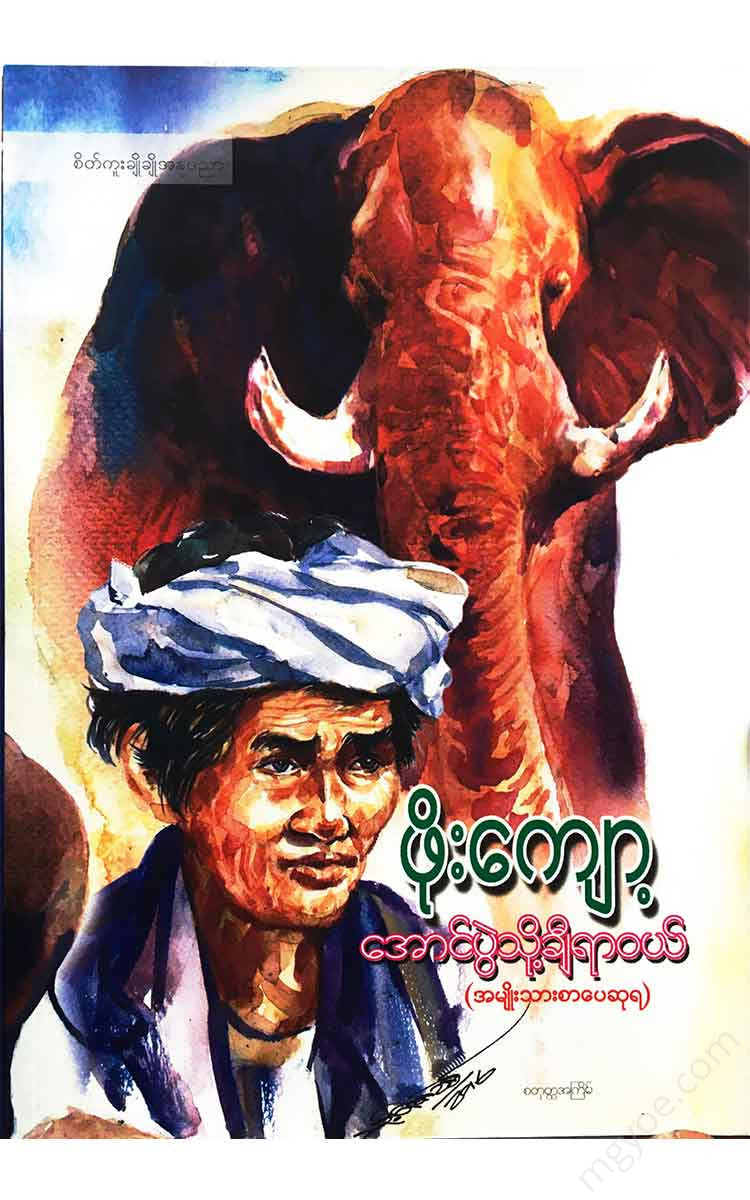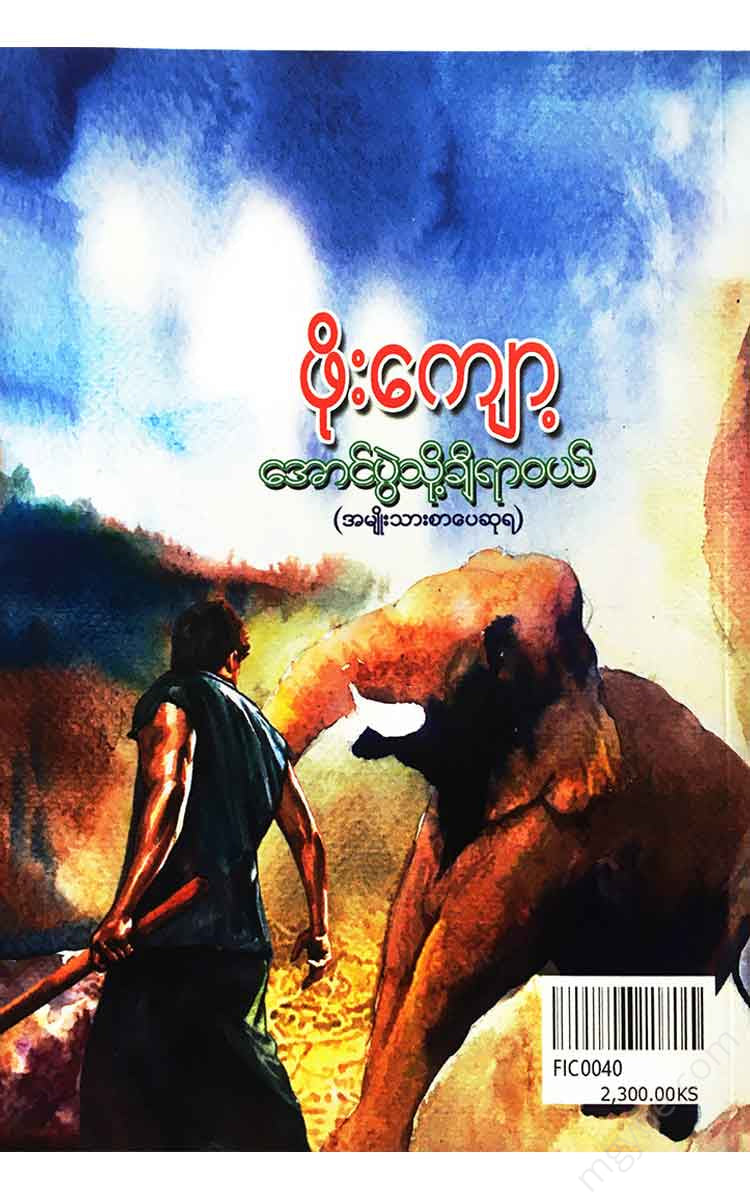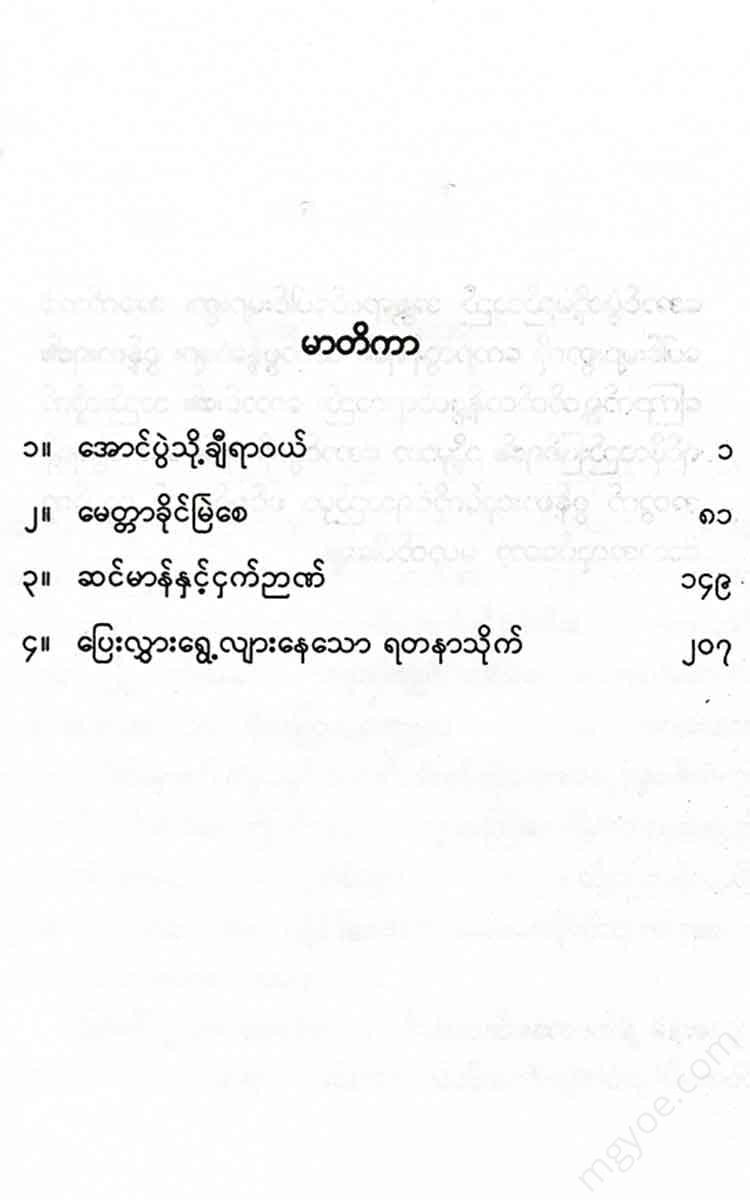စိတ်ကူးချိုချိုစာပေ
Pho Kyawt - Marching to Victory
Pho Kyawt - Marching to Victory
Couldn't load pickup availability
I was disappointed when I saw the speed of “Mi Po”’s trunk swing, which was faster than a boxer’s left or right punch. If it was so difficult to put a hammock on the body of a tame elephant, which is said to be very clever and gentle, then the task of trapping wild elephants, whose exact location is unknown, must be like a dream, and I was disappointed for the first time. Therefore, when I said, “Let me go to the Rakhine Yoma with Uncle Tin Aung and capture the elephants…”
“No way, Tin Aung... How can you use a man with a waist of about an inch to catch an elephant? This guy is always like this, and he always does this and that. I know about my son. If he gets to the Rakhine border for a day, he will get frustrated and run away, and I will lose all the money I have saved,” the father told Uncle Tin Aung.
"Hey, kid... is that possible? If you run away disappointed after you get to Yoma, you won't get a single penny back from the money you deposited. Think about it and then say it."
Uncle Tin Aung questioned me thoroughly, even in front of my father. “Don’t worry, sir… I can control my mind.”
When I spoke firmly, Uncle Tin Aung looked at my father's face with a look of "What's wrong?"
The job of trapping wild elephants is indeed a very dangerous one. Therefore, elephant trappers must be strong. They must be brave and agile. They must know the nature of wild elephants. They must be able to endure hardship. They must be diligent and diligent. They must also have experience in the jungle. And usually, elephant trappers are in their twenties, thirties, and even forties.
I was only eighteen years old, and during the British era, it was forbidden for anyone under twenty to join an elephant-catching group. That is why Uncle Tin Aung asked my father's permission and my determination in front of him.
The work of trapping wild elephants in the forest is not only laborious but also very costly. Therefore, the wealthy people have to invest money and cooperate with the moneylenders to do the work. The moneylenders who invest money will lose money if they do not catch any elephants that year, while the elephant trappers will only gain from their hard work and poverty.
In addition, the elephant trappers have to wait for three to four months, wondering whether they will be trampled to death in the jungle, mauled to death by a tiger, or die of malaria, and the children, wives, and relatives who remain at home until they hear that the elephant trappers have captured wild elephants in the jungle. Therefore, now, elephant trappers in Kachin State, Myitkyina, and Namtee have stopped doing the expensive and life-threatening job of trapping wild elephants with many people, but have started to do the job of trapping elephants with tame elephants, which is less expensive and not needed by many people.
The method of catching wild elephants and tamed elephants individually is to use a skilled leader, a bridle, a tamed elephant, a leader and a leader to help in case of an accident, and about 20 bamboo poles to catch the elephants. This method is not the method of catching elephants in groups, but the method of catching elephants individually in a rope, so it is not very dangerous. Like the method of catching elephants in groups, you can only get one elephant calf without getting a variety of adults, males and females. This method has only been around for the past 10 years, so our elephant hunters in Rakhine State had to catch wild elephants in groups using traditional methods of catching elephants, which were very expensive at the time, involved a lot of people and a lot of suffering.
My father, who was still young and had no idea about the nature of the jungle and the wild elephants, forbade me from going to the Rakhine plains with the experienced elephant hunters to capture elephants. When he could not stop me, he allowed me to do so. He also asked my younger brother, U Lay Tin Aung, to take care of everything. My father was getting old and could no longer capture elephants.
With my father’s permission and passion, I went with U Lay Tin Aung to the Rakhine plains to trap wild elephants. Three or four people were trying to put the elephant “Mi” in a cage. This elephant was the elephant of Ma Sha Ka Ko Ataw. Ko Ataw and our elephant-catching team, U Ba Khin, the leader, U Lay Tin Aung, the Chin national Niko, and Shwe Kyaw, were trying to put Mi Po in a cage. We had already arranged the side straps, the chest straps, the thick plates, etc., but every time we tried to put the new cage in, Mi Po would knock her down with her slender trunk and would not let anyone in. (I thought to myself that the speed of Mi Po's trunk swing was faster than a boxer's left and right punches. That's why I was so nervous when I saw this elephant and these people. What made me even more worried was that there was no hammock to put the hammock on. In fact, to put an elephant in a hammock, you have to have a hammock ready. This is a temporary camp, so there is no hammock. That's why they are having so much trouble putting Mi Po in a hammock.
"I don't know what planet this girl is in today. She's always doing the same thing with him, and U Ba Khin saw it too."
Ko Ataw, Mi Po's master, told U Ba Khin, "What Ko Ataw said is true."
